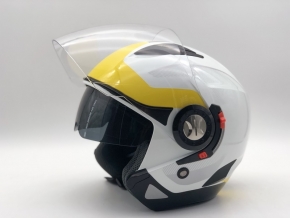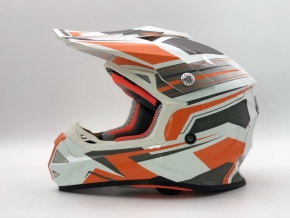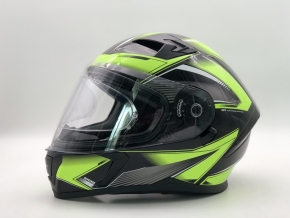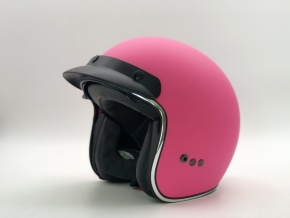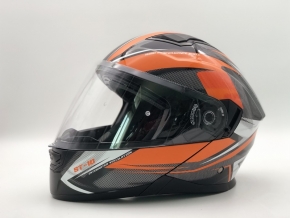What kind of motorcycle helmet is safe?
We have seen too many "folk" helmet test videos, which are hit with a hammer or shot with a bullet, but most of these videos are used for entertainment. The accuracy of the test is not reliable at first sight, and can tell you how bad the extremely poor helmet can be.
How to test the safety of motorcycle helmets?
Motorcycle helmets have different safety rating standards in different countries and regions. Europe is ECE, the United States is DOT, Japan is JIS, and China also introduced a new 3C helmet certification system last year. Generally speaking, only helmets that meet national standards and pass the inspection of professional institutions can ensure their safety!
The main purpose of helmet is to protect the head of motorcycle drivers when they are impacted, reduce injuries and even save their lives. It is an important riding safety equipment! There are many kinds of helmets sold on the market. Today, I will talk with motorcycle drivers about how to choose the right one among various helmets. How can we better protect each other with love helmets? Half helmets: half helmets only cover our celestial cover, which is light but poorly protected. Basically only suitable for very slow cycling.
Helmets: open face helmets with no face protection or only one windscreen (windscreen). Many knights playing vintage cars will choose 3/4 helmets. The advantage is good style, but the disadvantage is insufficient protection, because 30% of motorcycle accidents will fall to the chin.
Full Helmet: It often appears in movies, MotoGP competitions 's cool helmet! In addition to the Fullface full face helmet commonly seen in the above figure, the helmet also includes the following three sub categories:
Cross country helmet: based on the full face type, the jaw protection is strengthened, and there is a brim on the forehead to block dust and sunlight, so additional goggles are required.
Pull helmets: pull helmets are similar to cross-country helmets. The jaw design will converge and helmet lenses will be equipped.
Uncover helmet: At low speed, the mask can be partially lifted for ventilation, and the whole face can be closed. The structural reason of the uncover helmet will affect the protection of the helmet to some extent.
From the right side, the choice of helmets is the result of wearing half helmets when falling cars! In case of a situation, half helmet is more afraid of death than you, and will run away directly! As for the 3/4 helmet, although the 3/4 helmet will still stick to the post when it is properly worn, it cannot provide protection near the chin. When a car falls, it will usually directly 'jump into the street'. It is very painful for the chin to grind to the asphalt road! Only the left helmet can provide effective and complete protection!
Common helmet safety certification drivers often see words such as' DOT 'or' SNELL 'at the rear of the helmet. These are helmet safety certification. Let's know some common safety certification.
Service life: When buying a helmet, you should confirm whether there is relevant certification. In addition, you should also remember to pay attention to the service life of the helmet, which is usually 3-5 years (the service life of helmets made of different materials is also different). If the helmet is impacted by external force, although its appearance is not damaged, the internal cushioning material has been deformed and cannot provide effective protection, please do not use it again.
Ventilation: The helmet will come into the market only when it has practical effect after actual wind tunnel test. Some manufacturers also have a mirror demisting design, such as the Free Flow System, which integrates the design of the opening above the lens, the jaw opening and the neck deflector. When the jaw opening is opened, the fog on the mirror can be successfully taken away, greatly improving the demisting efficiency.
Lenses: High quality lenses are of safety design, not only not easy to break, but also will never break, that is to say, no matter how twisted, bent or hit, they will not break. There is no need to worry about being cut by fragments, and the lenses themselves are 3D shaped, not very thick, so there is almost no image dispersion.
Lining: Each helmet pursues a comfortable lining, which usually includes a main pad above the head and ear pads on both sides of the ears. A good lining not only helps the head and helmet fit together, but also has the shock absorption function. Most high-quality helmet linings can be dismantled and washed if they are dirty, or they can be bought and replaced in different thicknesses to achieve a helmet that really suits your face shape.


